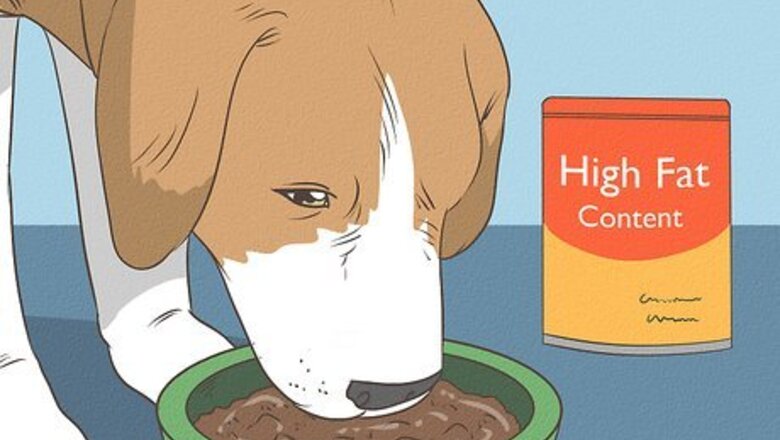
views
Providing for Her Needs
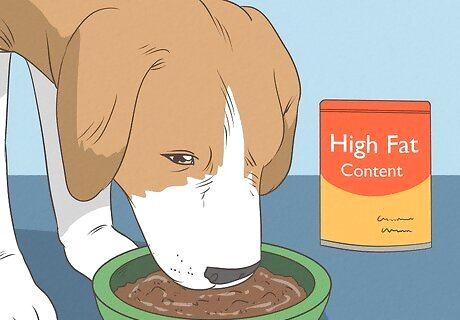
Give her energy through food. After giving birth and feeding puppies, the mother is going to be noticeably tired and she will need good food to keep her energy up. A food meant for nursing mothers is best, though a high quality food may suffice. Either way, now is not the time to limit food. Let the mother eat what she needs to keep feeding her babies. The mother may not show interest in food for about a day after giving birth. A nursing dog needs a different diet than her pre-puppy food. Choose a food with a higher fat content to make sure she is getting sufficient calories to meet the needs of milk production, and look for a food that is high in calcium and protein to help provide the puppies with more complete nutrition.
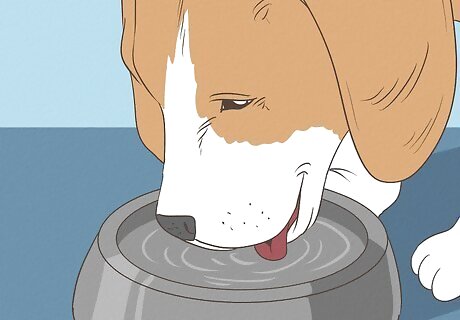
Give her access to fresh water at all times. You should also make sure that the mother has plenty of fresh water in addition to food. Producing milk takes a lot of her body's liquid, so to keep up, she needs to drink more than she normally does. Not getting enough water can make her more tired.
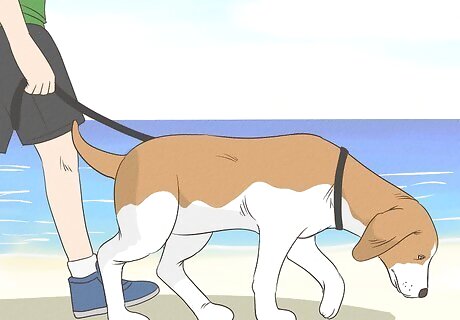
Take the dog outside in the first day or two. Often, the mother will not want to leave her puppies in the first day or so of having them, even to go outside. For that reason, you may need to pick up your dog and take her outside to use the bathroom. However, if she becomes aggressive, it's better to wait until she's more comfortable
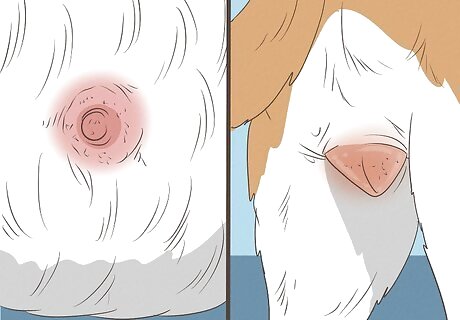
Pay attention to signs of infection and other problems. After birth, you should watch your dog to make sure she doesn't develop one of several common problems. For instance, she could get an infection in her uterus or in her teats. Another common problem is low calcium. If you notice any of these symptoms, take your dog to the vet. Some drainage from your dog's uterus is expected. However, it shouldn't be pale or gray. It also should flow freely and not smell bad. If it is smelly, thick, and pale/gray, she may have an infection. Normal discharge should be red, greenish, brownish, or black. With her teats, look for signs of infection, which include pain, swelling, irritation, and redness. The milk should stay white (and flow freely); if the milk turns green, red, or yellow, that's a sign of infection. You should also check for mastitis, which is an inflammation of the mammary glands. Look for swelling, red or hot areas, discoloration in milk, and changes in attitude such as lethargy or depression. If you suspect mastitis, contact your vet immediately. Low calcium shows up in various ways. Generally, your dog will show less interest in her puppies, and she may be disoriented or nervous. She may pant, whine, have stomach problems, or develop a fever. Finally, she'll start to walk differently, and she may get muscle tremors. One clear indication of low calcium is laying on her side with her legs extended straight out. If you suspect your dog has low calcium, contact your vet immediately.
Hand Feeding Puppies
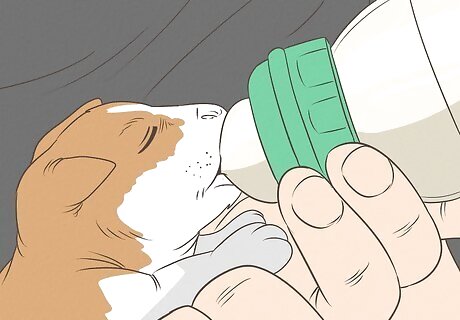
Hand feed the puppies if necessary. Mothers who've just given birth may run into complications, such as infection or low calcium. Often, that means she's not able to feed the puppies herself. In that case, you will need to hand feed the puppies while the mother recovers, and you may need to hand feed the puppies for good.
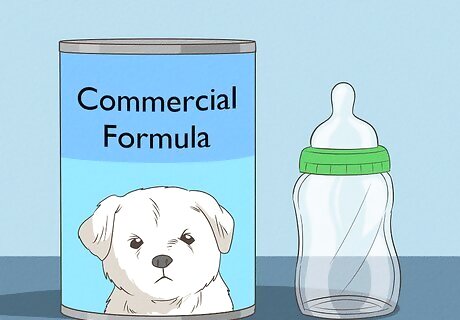
Get the supplies. You'll need bottles made specifically for puppies to feed from. You'll also need a commercial formula designed for puppies. While you can make homemade formulas, these formulas are not balanced as well as the commercial ones.
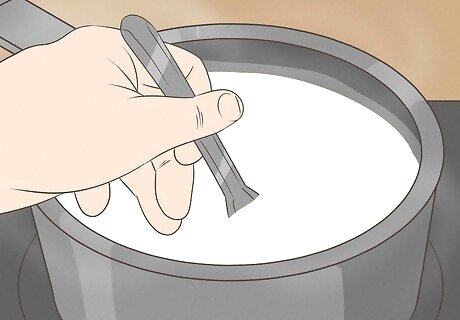
Prepare the formula and bottles. You can mix up enough formula for a day, but make sure to keep the extra in the refrigerator. Follow the directions on the package for mixing, then heat the mixture to 98 to 100 °F (36.7 to 37.8 °C) by placing it in a pan of water. Also, make sure to thoroughly clean the bottle and nipple each time you feed the puppies.
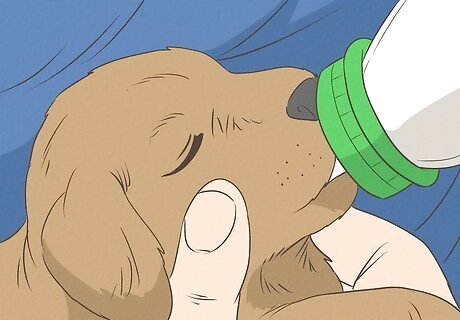
Feed the puppies. When feeding, the puppy should be on its stomach. In the first three days, feed the puppy every two hours. After that, you can move to every three hours, with four-hour periods at night. The second week, you can change to four-hour stretches during the day and six-hour periods at night. When the third week comes around, you can start moving to solid food, puppy mush, though you still need to be bottle feeding regularly.
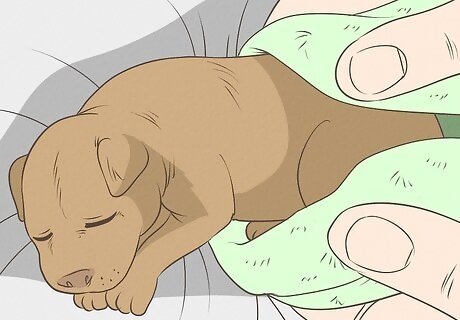
Massage the puppies with a warm towel. After feeding, use a towel or rag wetted with warm water to gently wipe each puppy in the area around its rear and genitals. This simulates the action of the mother licking the puppy, which encourages them to excrete waste.
Making Her Life Easier
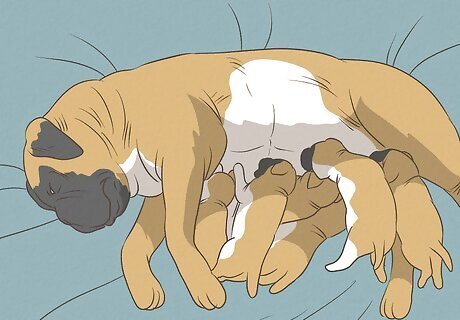
Limit access to the mother and puppies in the first month. Your first instinct might be to show off the new puppies to the world. There's nothing wrong with that. However, you should do it only through pictures. If you let everyone traipse by where the puppies are, giving each person a chance to hold a puppy, you'll put more stress on the mother, who's sole job right now is to protect and care for the puppies. Instead, stick to letting one or two people care for her. You should also keep her away from other pets in your home.
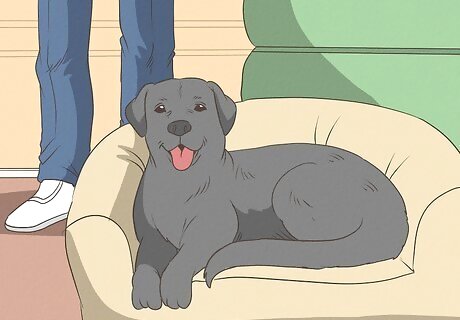
Relocate if needed. Sometimes, a mother may not want to stay with her puppies. Usually, that means she is particularly attached to you and the family and wants to be closer. You can move her to where she can be closer to your family, so she doesn't feel the need to leave the puppies.
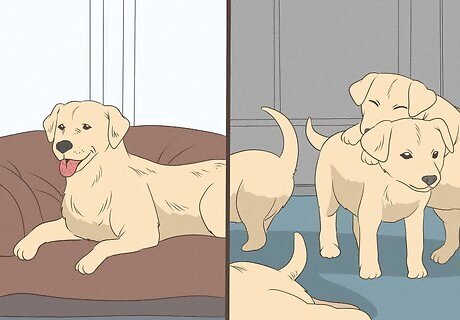
Give the mother a separate area at about 2 weeks. Once the pups are old enough, at a about 2 to 3 weeks, you can provide a separate area for the mother. It should be very close to the whelping box with easy access. However, having a separate bed will give her a break.
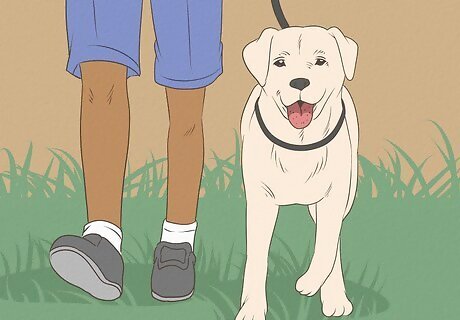
Let her take breaks after the first month. In the first month, the mother is going to want to be as close to her puppies as she can be most of the time. However, once the puppies start eating on their own, she may be more willing to take breaks. When that happens, allow her some time on her own. For instance, you could take her for a short walk around the neighborhood. However, follow her lead. if she really doesn't want to leave her puppies, don't make her.
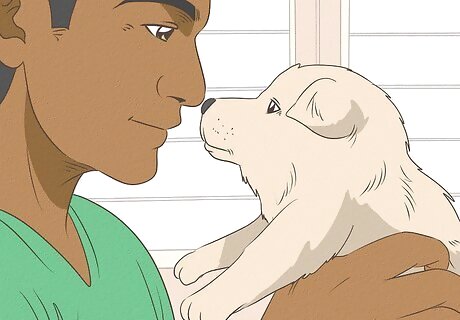
Help entertain the puppies. Once again, you should really wait until about a month has passed before attempting this step. However, once the mother seems more comfortable with having people around, you can help her catch a break by playing with the puppies yourself. Keeping them entertained a bit can help her rest.

















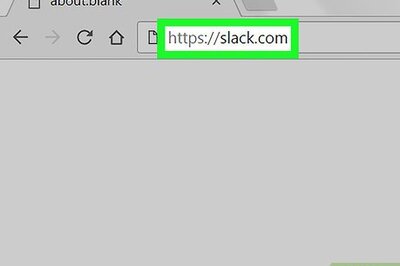
Comments
0 comment